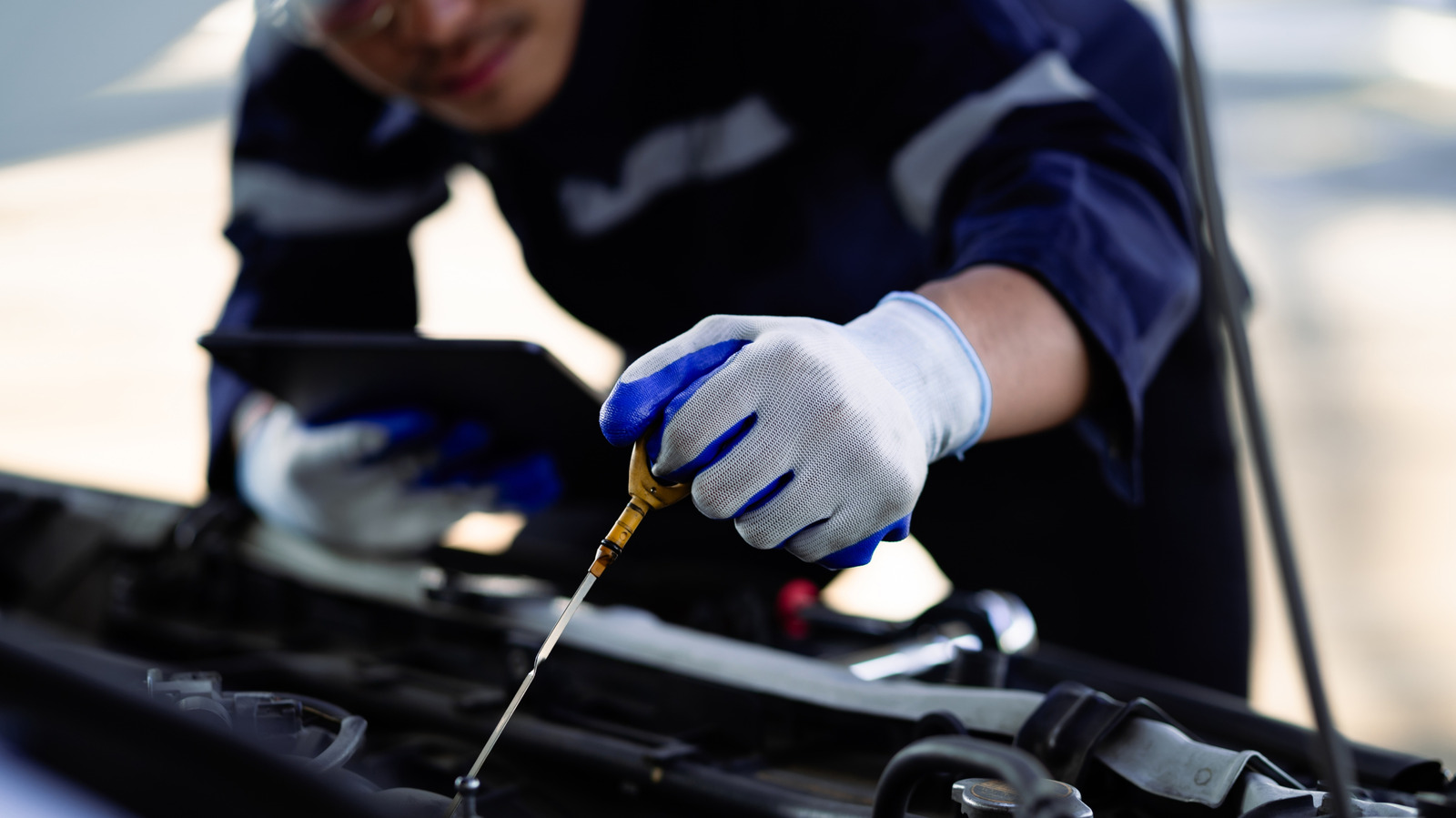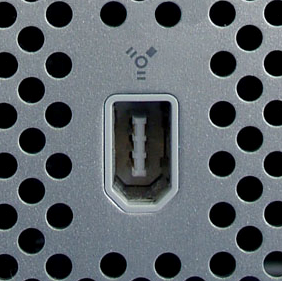My wife has a 2016 Honda Odyssey, and having grown up working on cars because my dad was a mechanic, I was shocked to learn that there is no transmission fluid dip stick. It’s considered a closed system and never needs to have the fluid changed, allegedly.
reinventing the wheel in the DUMBEST way possible at best.
planned obsolescence when the sensors or the head gasket inevitably fail at worst.
No, see, they just relocated the dipstick. You can locate it just behind the steering wheel, right above the driver’s seat.
PEBKAC.
I’ve had a car with where the oil pressure sensor failed; combine that with an oil leak, and you quickly have a major problem. So, what happens when the sensor telling you the oil level fails? A dipstick is extremely unlikely to ever fail to work correctly, so…?
You would think an engineer would understand this… I assume this is a decision from management.
Oil is essential. However, those manufacturers that claim you have to change synthetic oil three times a year are full of shit.
Depends on how much you drive, and what the recommended interval is. If the interval is 7k miles, and you drive 18k in a year, yeah, you need to change the oil 3x/year.
It seems to me that counting the number of cycles each makes, and basing your intervals off that would make more sense than mileage. If I’m constantly running at high RPM, that should require more frequent oil changes in terms of mileage.
I know it can last longer than that, but I think there is a benefit to doing so even if it doesn’t need changed that often. It’s the same reason I have my mechanic do my oil changes instead of doing them myself. It’s so that they can look at the rest of the car and let me know about problems before they become a much more expensive fix. Kinda like going to a doctor for a yearly checkup and blood work.
I can fix almost anything on a car if I know what the issue is and have the shop manual, but I don’t work on cars enough to know all warning signs or quickly diagnose things.
However, I do realize how difficult it can be to find a mechanic that is trustworthy, competent, and reasonably priced. I’m generally not a fan of dealership mechanics or the places that are dedicated to cheap oil changes. Not saying none of them have good mechanics, but it can be hit or miss.
Just forcing more people towards mechanics. Can’t see levels or if there might be an issue with a lubricant, so if you burn up a transmission, guess you gotta buy a new one.
I’ve wondered this for a while and this seems like a good time to ask: Do electric cars use motor oil in the same way as an internal combustion vehicle? Like do you need to get oil changes in an all electric the same way and have a need for a dipstick?
i have oil in the differential that needs occasional replacement
Electric cars do have oil that will ultimately need changing but it’s less exposed to contaminants than the engine oil in a internal combustion engine and therefore will last a lot longer. EVs typically have a reduction gearbox and differential and these will require oil changes in a similar fashion to a manual gearbox or differential in a ICE vehicle - i.e. barring exceptional circumstances it will last long enough to get out of warranty but don’t believe it will never need changing.
It still has oil in the transmission. And yes, you are supposed to change it occasionally because its high slip friction oil that burns over time.
Nope. The only fluid I worry about in my EV is windshield wiper fluid.
Eventually, you’ll have to top up your blinker fluid as well.
No brake calipers or power steering onboard?
Hmm do brake calipers age? You’re not really using your brakes during normal driving.
Power steering and other hydraulics would need changing eventually.
Brake fluid is hygroscopic and will accumulate water over time despite being in a nominally sealed system. Water in solution with brake fluid noticeably lowers the boiling point which leads to issues under repeated braking (e.g. down long steep hills) as the fluid boiling means you lose braking capacity in that circuit.
You should ideally be changing the brake fluid every few years (2-3 being the typical recommendation) and that applies even if the brakes are used less often.
You can use DOT 5.1 to significantly increase that wet boiling point, but it’s expensive for normal car use. I usually use it in my motorcycle, since I’ve experienced brake fade on that before, and it’s… Not fun.
Seems like 60k miles for brake fluid replacement and 80k miles for low conductivity coolant replacement. Then also replace the normal coolant at 120k miles. This is for an Ioniq5.
I feel like most electric cars don’t need to use brakes going downhill. The regen is heavy enough to maintain a reasonable speed.
True, and ICE cars don’t need to use brakes on long hills either. Use your transmission; that’s why they put those manual shift features into the car
The Regen in my Kona will stop me even on the steepest hill if I let auto do its thing. Shits wild.
And the blinker one right? EVs still have that afaik.
Got my mechanic to replace the transmission fluid in mine after 80,000km, cost $90NZD
I’m not sure if this is universally true but I’ve never seen a fully electric vehicle that uses motor oil. Hybrid vehicles with an internal combustion engine and an electric drive train would still need it, of course.
Not having to take my car for oil changes is bliss.
There’s still hydraulic fluids and transmission oil in EVs but by the time you need to change that most people are long out of warranty and likely already onto their next car.
So strictly speaking there is oil and fluids that need replacing but like its such a long life span.
Wait, what? At least on every car I’ve owned, the recommended interval for a transmission fluid change was about 100k mi. Are most people buying a new car after less than 100k of use? That seems ridiculous! My Corolla is almost at 250k now, I’ve had it since 2015, and I’m expecting her to hit 1m mi before I put her out to pasture.
This proactive approach helps to avert potential engine damage
Ah yes, the old “you’re too stupid to do anything by yourself, so we kindly prevent you from trying”
I mean, I honestly don’t have a problem with a notification telling me I need to top off my oil, or telling me I’ve driven enough that it is time for the scheduled maintenance. I just also want to be able to manually check the oil level with a dip stick.
To be fair, when you drive a dangerous vehicle on a public road, you’re not only putting yourself in danger…
I’m not saying that we shouldn’t ever trust people to do their own repairs, but just thought i’d play devil’s advocate
I mean, yeah, most people probably don’t know what they’re doing but does that mean that no one should be able to fix their own stuff any more?
This is why it was removed from auto transmissions, people would overfill their transmissions and it would froth up and burn out the clutches.
I would argue that it adds a new failure point, and a catastrophic one at that.
Yes, many hunans don’t monitor their oil properly. I’ve seen some destroy engines because they thought the low oil light could be ignored for a week.
Even if you still had the dipstick, owners would become reliant on the sensor and grenade the engine when it gets it wrong. Remember how Teslas had hoods that flew open while driving? The problem wasn’t the latch. The problem was owners relying on a crappy sensor.
New cars absolutely do have dipsticks; they’re the ones designing them.
Notwithstanding the potential for software bugs or other issues inherent with monitoring oil levels only digitally, monitoring just the oil level is not the sole purpose of the dipstick. Being able to physically see a sample of the engine oil is a vital diagnostic tool and can alert an owner or mechanic to a head gasket problem or other oil contamination issue, or if something is grinding metal shavings into the oil, etc.
For what it’s worth I have yet to actually physically see a new vehicle without an oil dipstick. I guess they’re out there, but so far I’ve been lucky. But I have already had quite a few automatic transmission equipped cars without a transmission dipstick cross my path, and that’s already enough of a pain in the ass. If you’re lucky there’s a side plug in the transmission case you can use to check the fluid condition and level (after crawling under the vehicle…) but in a lot of cases there isn’t even that – your only recourse is to drop the transmission pan off entirely, which causes you to lose all the fluid in the process. And you’ll probably also have to replace the gasket while you’re at it. Needless to say, this is an incredibly moronic design decision.
I thought it was hilarious when I saw that Briggs and Stratton has been selling small engines featuring “no oil changes needed” (or possible). They advertise that it’s “oiled for the life of the engine” … well, by definition, yes, that’s like saying “if you light a man on fire he’ll be warm for the rest of his life”. These companies are so predatory and transparently trying to turn durable products into disposable replacement services, it’s unbelievable.
Can confirm; I used to manage a hardware store with an attached small engine repair shop. There’s a reason Briggs and Stratton abbreviates so readily to “BS.”
They’ve been trying to do the absolute bare minimum possible to maximize profits and making their machines flimsy and deliberately uneconomical to repair for several decades, now. All I can say is that we ought to be thankful for aftermarket parts.
IMO Briggs started losing their way with those automatic throttle engines that always wind up surging over and over for me. BRRRRrrrr BRRRRrrrr BRRRrrrr over and over.
IIRC that’s eithera damaged fuel pump diaphragm or a sticking auto choke valve. Either way its like 10 minutes and less than 1$ to fix using a common Phillips screwdriver.
For what it’s worth I have yet to actually physically see a new vehicle without an oil dipstick.
It seems to be mostly a euro thing. BMW stopped using oil dipsticks nearly 2 decades ago. Land Rover also somewhere in the late 00’s.
But I agree it’s a moronic idea. Not only does it prevent you from checking oil condition like you said; if it’s after an oil change, it takes about 15min just to check the level (and another 15 if you messed it up). At $150+/hr shop rates, that adds up.
It seems to be mostly a euro thing. BMW stopped using oil dipsticks nearly 2 decades ago.
I was about to make this joke: “That’s just not true. My 2008 BMW had a… holy shit, that car is nearly 2 decades old now.” Then I went to confirm, and that car did NOT have a dipstick. The car came with 5 years of “free” service and never gave me a day of trouble, so I never realized it didn’t have a dipstick. That’s probably a major reason it was removed, since even a DIYer like me who likes to work on things myself never even tried to use the dipstick in 4 years.
Do you take it to the shop for oil changes then? I check my dipstick every time?
I used to be a lube tech in a different life 15 years ago and would occasionally see vehicles without dipsticks. Like you said the German brands like BMW and Mercedes but also Chrysler vehicles like the 300 and Magnum had a tube for the transmission dipstick but no dipstick inside of it just a cap on the tube.
At that time, Chrysler was owned by Daimler and shared a lot of stuff with Mercedes.
The NAG1 transmission some 300s used in Europe at least, is in fact the venerable Mercedes 722.6
That transmission was used in the US as well, before they switched to a ZF trans.
Isn’t that the point? The service department makes more money.
My wife has a 2015 Jeep Grand Cherokee. The AC condenser got a leak in it and it was going to be over $2k to fix in a shop. I took it on myself to save money. The condenser mounts to the back of the radiator, so I had to get at it by removing the bumper and everything between that and the engine block. Also attached part of the radiator is the transmission cooler. Unhooking everything meant that I was going to lose some fluids, but that was fine, I’d top them off and pay to have refrigerant added.
After I reassembled, I when to check the trans fluid levels, and couldn’t find the dipstick. It turns out, like you said, if you crawl under the vehicle, on the back of the trans pan is a bolt you can remove, and if you have a special dipstick that you buy separately for this sole purpose, you can stick it in there to check levels. There’s not way to add fluid without pumping it in there, but at least you can see how much you have.
Since I only lost less than a quart, I took it into the shop, explained what’s up, and asked for it to be topped off. The shop guy calls back later, and told me that to do the trans fluid, the filter is only sold with a whole new pan, and because Chrysler, the fluid cost like $40 a qt, and I needed like 15 to fill it. It still cost more than $800 to just do that, then more than $500 for the refrigerant. I still saved about $500-1k in parts and labor for what I did, but, the lack of dipstick and fill tube was an extremely inconvenient and expensive thing.
Also attached part of the radiator is the transmission cooler.
I love this design, this way when your radiator starts to fail you get water in your transmission and destroy it with the strawberry milkshake of doom.
Like 99% of automatic transmission vehicles have a radiator built this way. Even my 1995 Camry had a radiator like that (manual transmission though).
if you crawl under the vehicle, on the back of the trans pan is a bolt you can remove, and if you have a special dipstick that you buy separately for this sole purpose, you can stick it in there to check levels.
You don’t need a disptick, you just fill it until it starts coming out of the hole. Lots of heavy equipment works this way.
You just check it with your finger. Then you use a container with a tube and squeeze the fluid in until it overflows.
Jeremy Hunt knows what’s up
Well the good news is your trans should last a little longer now that some of the fluid has been replaced.
Your first line made me laugh out loud!
And yes, the enshitification is real.
Why would you put a dipstick in a EV? Sounds like a good design decision to me.
I think we can all safely assume that EV’s are not relevant to this discussion.
Just to fuck with people I’d put one on the blinkers
next to the blinker fluid tank
On the bottom of it actually
I like you!
Hey I appreciate it :-)
Because manufacturers are scummy, that’s why.
If you can’t check the oil, you can’t complain to the dealer can you ? Once the warranty’s over good luck proving anything.
They’re not that dumb.
Why the clickbait? Just put why in the title or post description
New Cars Don’t All Come With Dipsticks Anymore Because Of Digital Oil Level Measurement
Let me guess, this Digital Measurement is only availible to CeRtIfIeD tEcHnIcIaNs iNtO wHoSe aSsHoLe we pUsHeD oUr fInGeR at lEAsT 30 Cm?
Well, currently it’s available on the dashboard. So no, no quite. But eventually, yeah it’s pretty easy to predict it’s heading the way you were thinking, just give it time.
Back when I worked at a BMW store we had to, after changing the oil, start up the vehicle and get it up to temperature before it would give us a reading. Several times the vehicle caught on fire for some reason during this process. So fucking stupid.
The real reason is that owners would not reseat the dipstick properly, which would cause a vacuum leak and a lean fuel mixture that would trigger the CEL.
But you can’t expect Jalopnik writers to know basic facts like this.
The real reason is that owners would not reseat the dipstick properly, which would cause a vacuum leak and a lean fuel mixture that would trigger the CEL.
That is absolutely piss-poor design. But definitely a BMW thing to do.
I mean, easily catching fire is a thing since German tanks in WWII, so yes.
My wife’s electric car doesn’t have a dipstick.
Unless you’re sitting in it. ;)
The article is really lazy about citing its sources.
many cars don’t come with dipsticks anymore. Some sources say
Are these some sources in the room with us?
it’s because automakers don’t trust us to use them, so why make them? (That’s kind of along the lines of rather have it and not need it than need it and not have it, right?) Or maybe it’s some kind of conspiracy to keep drivers coming in for oil changes more often.
This is like an eighth grader padding out a book report.
But in actuality, it’s because a lot of things are going digital.
Tl;dr: Here’s a higher quality source: Why the Reliable Dipstick is Sliding into Obsolescence
The customer has to pop the hood. They might get their hands dirty. It’s not the modern way of doing things
I have a better source:
MONEY
This reminds me of funny American commercial from when I was a kid















